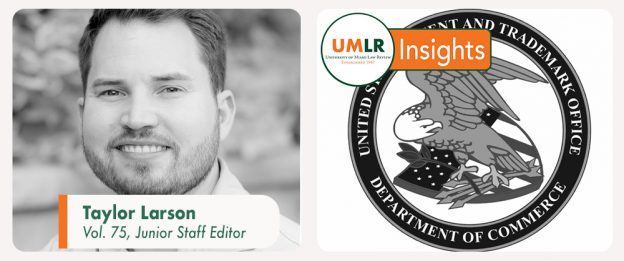While many businesses continue to struggle amidst a global pandemic, the Supreme Court recently provided brand owners a thin silver lining. In one of Justice Ruth Bader Ginsburg’s final opinions, the Court decided in U.S. Patent & Trademark Office (“USPTO”) v. Booking.com that a generic word combined with “.com” can be eligible for federal trademark protection.
A trademark is a word, name, symbol, image, or design used in commerce to distinguish the goods of one brand from those of another. In trademark law, the strength of a trademark is measured on a spectrum of distinctiveness. The more distinctive the trademark, the stronger it is and the more likely it is to win claims against infringers. On one end of the spectrum there are “fanciful” trademarks, which courts typically treat as the strongest trademarks. These are made-up words like “Kodak” or “Clorox.” They only have one meaning: their trademark meaning. On the other end are “generic” terms that identify a general class of goods or services. These are characteristics like “lite” for beer or “footlong” for sandwiches. By nature of being generic, consumers may struggle to identify the source of the goods or services and federal trademark protection is automatically denied. Only distinct trademarks qualify for protection under the USPTO, and only federally registered trademarks carry the presumption that they are distinctive in an infringement dispute.
Beginning in 2011, the travel website Booking.com tried to register its name, but the USPTO rejected the applications because it found the name to be generic. Booking.com sought judicial review, and both a Virginia District Court and the Fourth Circuit Court of Appeals ruled for Booking.com because consumers do not perceive “Booking.com” to be generic. The USPTO appealed to the Supreme Court, which granted certiorari. In granting certiorari, the Court was likely attempting to clear up an ambiguity among the circuit courts about whether “.com,” when appended to a generic term, can be distinctive for trademark purposes. For example, in 2009, the Federal Circuit, in contrast with the Fourth Circuit in Booking.com, found Hotels.com was not a protectable trademark because adding “.com” shows only internet commerce, not distinctiveness.
The USPTO presented what it thought was an uncontestable argument: 0 + 0 = 0. That is, starting with a generic term, “booking,” and adding a generic domain suffix, such as “.com,” results in a generic combination. This premise stems from the 1888 Goodyear decision, in which the Court held a generic corporate designation, such as “Company,” added to a generic term does not create trademark eligibility. Yet the Court rejected this analogy to Booking.com, observing that the answer was not so rudimentary.
“Booking” and “.com” are indeed generic on their own. However, the Court found that the distinctiveness should not be evaluated in isolated parts, and it is the consumers who ultimately decide whether the compound term is generic. Justice Ginsburg wrote, “whether ‘Booking.com’ is generic turns on whether that term, taken as a whole, signifies to consumers the class of online hotel-reservation services.” The district court had determined that “Booking.com” acquired secondary meaning as to hotel-reservation services based on a survey that showed nearly 75% of consumers believe “Booking.com” is a brand name and a not a generic term. While the USPTO disputed the lower court’s determination that “Booking.com” is not generic, it never disputed the assessment of the consumer’s perception. Justice Ginsburg summarized her view clearly: “Because ‘Booking.com’ is not a generic name to consumers, it is not generic.”
The USPTO tried to push for a nearly per se rule that would ignore consumer perceptions and make the combination of “.com” with a generic term necessarily generic. But this, the Court said, would conflict with the “bedrock principle” of trademark law—the generic character of a particular term depends on its meaning to consumers.
To be sure, the Court is not suggesting that all “generic.com” brand names can have federal trademark protection. Each case still needs to be examined on its own merits with consumer perception as a key component. But why should we care that a generic term combined with “.com” will no longer receive an automatic rejection from the USPTO?
This decision is a victory for countless brand owners who have worked tirelessly to build their brand but whose trademark protection has been in question. Booking.com, and similar brands that use a generic domain name, likely have invested significant time, capital, and other resources to gain popularity, but were always at risk because they could not receive trademark registration. Not anymore. The trademark-registration door is now open for brands that want to offer their goods or services through a generic domain name. Uncomplicated domain names are easy to remember and great for marketing. And, since they now have the potential for federal trademark protection and are less susceptible to typosquatters, they also make sense from a legal standpoint.
The full ripple effect of this case is yet to be seen. USPTO v. Booking.com will likely result in an increase in “.com” trademark filings, which, in turn, will also increase trademark enforcement litigation. In any event, just as she did with countless other areas of law, Justice Ginsburg left a profound impact on trademark law and her legal mind will be missed.






